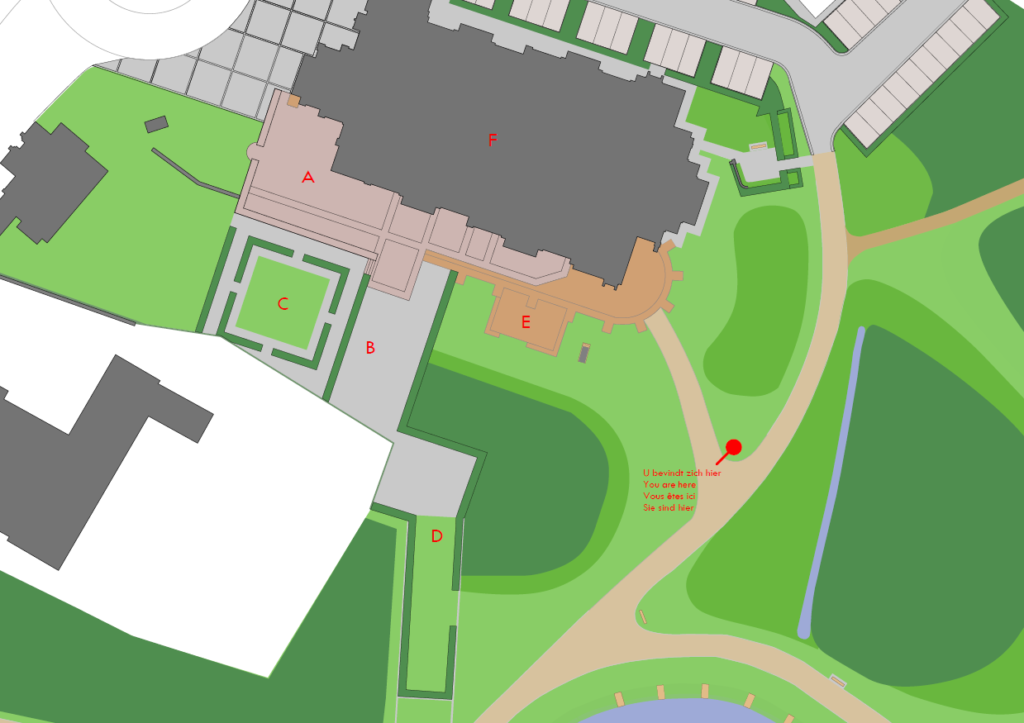In the Abbey Garden, you can discover the different building phases (6 stages) of Zonnebeek’s Augustine Abbey. The building history of this complex starts around 1197 and ran until the French Revolution, after which it was transformed into a castle with a park. Based on different pavements in the garden, you can distinguish the building phases.
History
The scanty buildings that were preserved until World War I were completely shot to rubble in 1917. Between November 1917 and April 1918, the 1st Australian, 1st Canadian and the 171st and 254th British Tunnelling Companies build an underground corridor system or deep dugout under the church ruins. The heavy foundations and rubble provide good protection from German shelling, and the Canadians initially continue to search for the church’s crypt, which they plan to use as a shelter.
When the Zonnebeke Church Dugout was abandoned in April 1918, during the German spring offensive, it was unfinished and presumably only used as a storage place for materials. The corridor system is just below Romanesque, 11th-century foundations and the foundations of an 18th-century extension to the church, today symbolised by ironstone and baked clinkers. In the Abbey garden, the location of the dugout is marked by grey lines on the paving. There is also an idea representation of the Abbey Garden exhibited in the Church Tower with the Zonnebeke viewpoint.
Abbey buildings
The earliest abbey buildings (see map below), in addition to a Romanesque cross church (A), were used communally for living, praying and working. That second building phase starts in the mid-12th and ends in the second half of the 13th century. Then more buildings appear south of the church with a transition to early Gothic style (B). During the third phase, buildings in red brick form a U-shape (C). In 1579, heavy destruction by the Sea Beggars takes place. The subsequent years of neglect are seen as a fourth, dark phase.
Reconstruction takes a long time. Some parts are never fully restored. Yet in the fifth phase, the abbey reaches its largest size. That expansion is marked in today’s park by hedges and copings (D).
Only the church and some buildings from the last phase are preserved until WWI (E). They are eventually totally destroyed. Between November 1917 and April 1918, the 1st Australian, 1st Canadian and the 171st and 254th British Tunnelling Companies build a dugout under the ruins of the church. The heavy foundations and rubble provide good protection. The shape of the dugout can be seen through painted grey lines on the pavement. After the war, the new church is rebuilt a little further north (F).

Practical info
- Public
- Free
- Can be done with a guide







